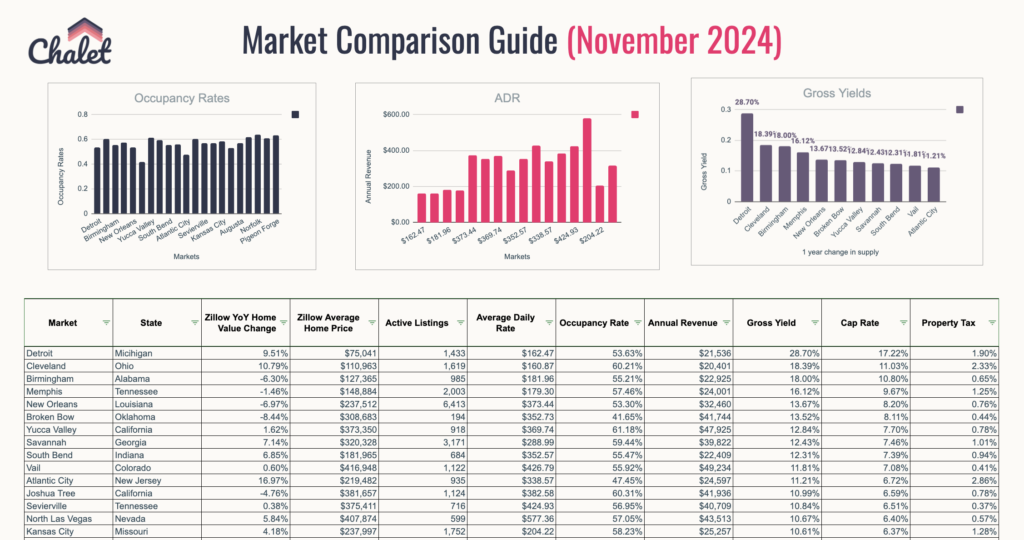Introduction
Cedar Rapids, Iowa, may not be the first place that comes to mind when you think of vacation destinations, but it’s quietly making a name for itself in the short-term rental market, thanks to the popularity of platforms like Airbnb. In this blog post, we’ll delve into the world of short-term rentals in Cedar Rapids, examining key statistics, market trends, and answering some essential questions about this charming city.

Cedar Rapids Real Estate Landscape
Before we jump into the short-term rental market, let’s take a quick look at the real estate scene in Cedar Rapids. According to Zillow, homes in Cedar Rapids have depreciated by 4.50%, with a median home value of $186,447. These figures set the stage for understanding why short-term rentals have gained traction in this city.
Short-Term Rental Market Overview
Supply and Demand
As of the latest data from Chalet, there are 219 active short-term rentals in Cedar Rapids, Iowa. This robust supply caters to the growing demand for unique accommodation experiences in the city.
Pricing and Occupancy
The average daily rate for these short-term rentals stands at $124.10, and the occupancy rate hovers around 52%. This indicates a healthy demand for short-term rental properties, making it an attractive option for property owners.
Revenue Potential
For property owners, the annual revenue generated from short-term rentals in Cedar Rapids is approximately $18,000. This enticing figure highlights the financial appeal of investing in short-term rental properties.
Return on Investment
With an average gross yield of 9.65%, short-term rental properties in Cedar Rapids offer an attractive return on investment, making it a lucrative opportunity for both investors and homeowners.
Property Tax Considerations
It’s worth noting that the average property tax in Cedar Rapids is 1.65%, a factor that property owners should consider when entering the short-term rental market.
Top 200 Airbnb Rental Markets

Instantly compare top 200 short-term (Airbnb) rental markets in the US
Cedar Rapids at a Glance
Now, let’s address some important questions about Cedar Rapids, IA:
Median Household Income
The median household income in Cedar Rapids, IA, is a crucial factor for both property owners and potential renters. This figure helps gauge the affordability and market potential for short-term rentals.
Climate
Understanding Cedar Rapids’ climate is essential, as it can influence the peak tourist seasons and rental demand.
Population Size
Knowing the population size provides insights into the potential customer base for short-term rentals.
Sports Teams and Colleges
Exploring the local sports scene and educational institutions can offer additional context about the city’s culture and attractions.
Crime Rate
Safety is a top concern for travelers, so being aware of the local crime rate is essential.
Visitor Demographics
Understanding where visitors to Cedar Rapids come from can help property owners tailor their marketing strategies.
Total Number of Visitors
Having data on the total number of visitors allows us to gauge the overall tourism potential in Cedar Rapids.
Tourist Attractions
Highlighting the city’s top tourist attractions can provide valuable information for property owners looking to cater to visitors.
Peak Season
Identifying the peak tourist season in Cedar Rapids is crucial for optimizing rental income.
In conclusion, Cedar Rapids, Iowa, is emerging as a promising destination for short-term rentals, with a growing supply, attractive returns, and a strong demand for unique accommodation experiences. Property owners and investors should consider the factors discussed in this blog post while keeping an eye on market trends and local developments to make the most of this exciting opportunity in the heart of the Midwest.

